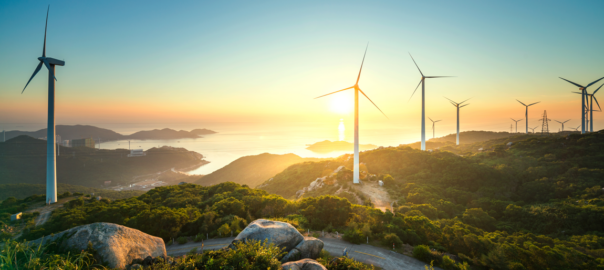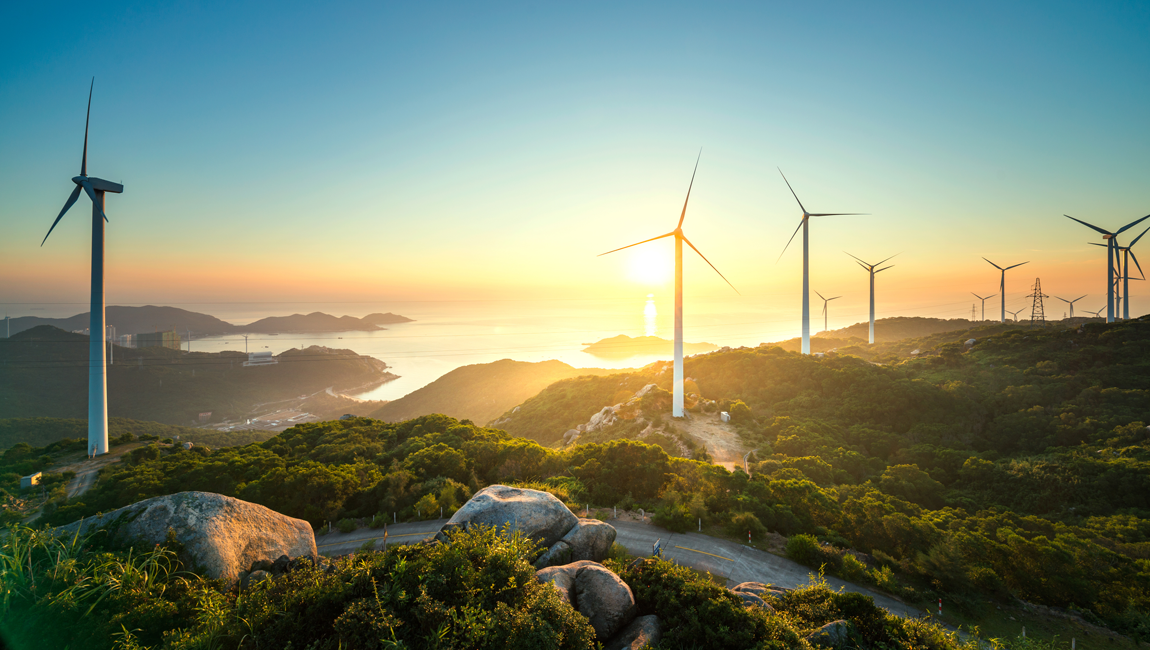
Signs of Promise for a Sustainable Future, Part 1: Global Action
Amid rising climate challenges, global progress accelerates. Legal developments, renewable energy growth, and international pledges reflect collective commitments. Challenges remain, but with cooperation, the 2030 renewable energy goal remains within reach.
Signs of Change
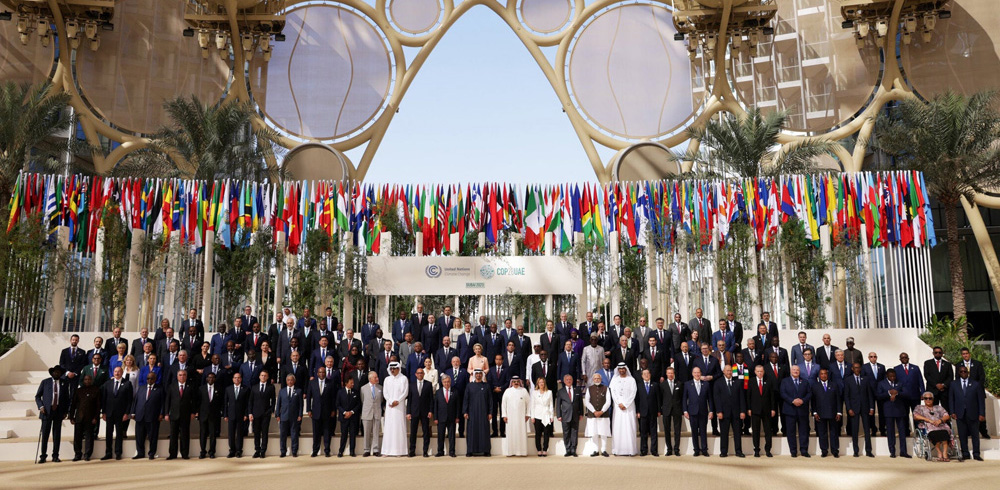
Clearly, a human-driven transformation of this magnitude demands a nearly universal sense of shared purpose, rooted in an unprecedented level of empathy and a collective identity as global citizens. Most critically, despite decades lost to greed and irrational and self-destructive resistance, the United States has finally embraced its leadership responsibilities. The impact of climate-related disasters has led an increasing number of Americans to understand their obligation to future generations.
A New Commitment to Renewable Energy in the United States
The most significant development in advancing sustainable energy is the approval of the Biden Administration’s Inflation Reduction Act (IRA) in 2022. Setting aside the political framing of its title, this landmark legislation authorizes the expenditure of hundreds of billions of dollars to promote green energy and reduce greenhouse gas emissions. It is the largest investment in clean energy and climate-related initiatives in American history. The goal of this investment is to reduce the nation’s greenhouse gas emissions by 40% by 2030.
The IRA offers tax credits and various subsidies for electric vehicles and charging infrastructure, and for numerous renewable energy projects. It provides funding for American manufacturing to transition to clean energy, and more funding to directly reduce greenhouse gas emissions from agriculture and from existing fossil fuel production. An underappreciated benefit of the IRA is its modernization of the aging electrical grid, which in its present state has prevented connecting vast quantities of wind and solar sources that are completed and sitting idle.
The IRA expenditure is set to be dispersed over ten years. Since this extends well into the new Trump presidency, there is concern that the IRA will be scrapped. However, and despite the fact that every single Republican in Congress voted against it, the majority of the financial benefits of the IRA are going to Republican-leaning states. It would be politically unpopular to make substantial cuts to the act, and so it is widely expected that while some subsidies for consumers will be eliminated, the core of the act will remain in force.
The Global Race to Renewable Energy
Other countries are also spending great investments in clean energy. The Paris Agreement of 2015 committed 195 nations to limit the global temperature rise to 2˚C (3.6˚F). China invests more each year to develop and install wind and solar energy than the rest of the world combined. India plans to install more new solar power each year than the entire US installed base. The EU’s Fit for 55 package designates over one trillion US dollars for the transition to clean energy. And although it is smaller than these expenditures, the Inflation Reduction Act might well have a larger impact. It is designed to stimulate the American economic engine to take a much greater role in the green energy transition.
Fueled by a growing understanding of the economic benefits of transitioning rapidly to renewable energy, progress persists even in the face of rising emissions from fossil fuels. Renewable energy has become the fastest-growing source of new power globally. For example, total energy use in California has remained basically constant for the last 30 years despite an over 60% increase in population and growing economic growth. In 2019, the state passed its 2020 goal to reduce emissions to 1990 levels and produce 50% of its electricity from renewable sources.
The significant increase in CO2 emissions over the past two decades can largely be attributed to the world’s poorest countries burning coal to generate the energy necessary for improving living standards. In recent decades, hundreds of millions in China and India have been lifted out of extreme poverty, with coal-fired electricity playing a crucial role in this achievement. Even so, the people of these countries see better than most in the United States the threats posed by climate change and understand the urgent need to replace fossil fuels.
China now produces a third of the world’s solar electricity, about three times the capacity of the US, installing about four times that of the US every year. China also generates about 70% of the world’s solar heating. Thanks to the years of inaction in the US, China has a large advantage in renewable energy technology and sees it both as a means to surpass America’s overall economic dominance and as a way to end its strategic dependence on fossil fuel imports. India also installs more solar electricity capacity each year than does the US and plans for a great deal more—and is purchasing the equipment from China.

Between 2000 and 2022 global wind power generation grew roughly 12,000% and continues to accelerate. Europe now generates about half of its total electricity from wind farms and the amount of power from fossil fuels in Europe declined by 19%—the largest decline ever—in the first half of 2019, even while electricity demand has gone up. In many locations, wind power is the cheapest source of electricity.
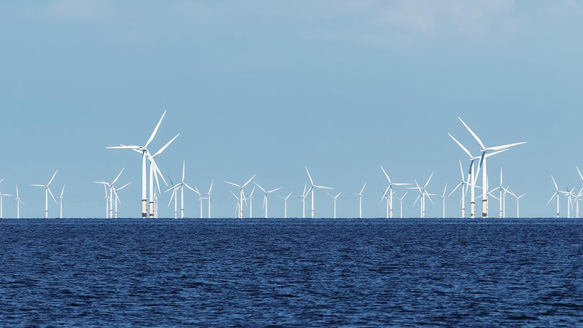
During COP28 in late 2023, over 130 countries committed to tripling the world’s renewable energy output to a minimum of 11,000 GW by 2030—a desired rise from 2,799 GW in 2020. Due to China’s huge surge in solar energy generation, producing equal to that of the rest of the world combined, 2023 experienced the fastest growth rate in the last 20 years. As a result, 2023 was the 22nd consecutive year that renewable energy installations broke a new record. However, despite this continued global growth, in the current world scenario we would find ourselves falling short of our 2030 goal. The International Energy Agency (IEA) has outlined the four main challenges that stand in the way of reaching this target.
- Policy indecisions and delayed responses to these policies.
- Inadequate investment into grid infrastructure, slowing expansion of renewable energy projects.
- Administrative obstacles paired with global social reception.
- Deficient funding in developing and lower income regions.
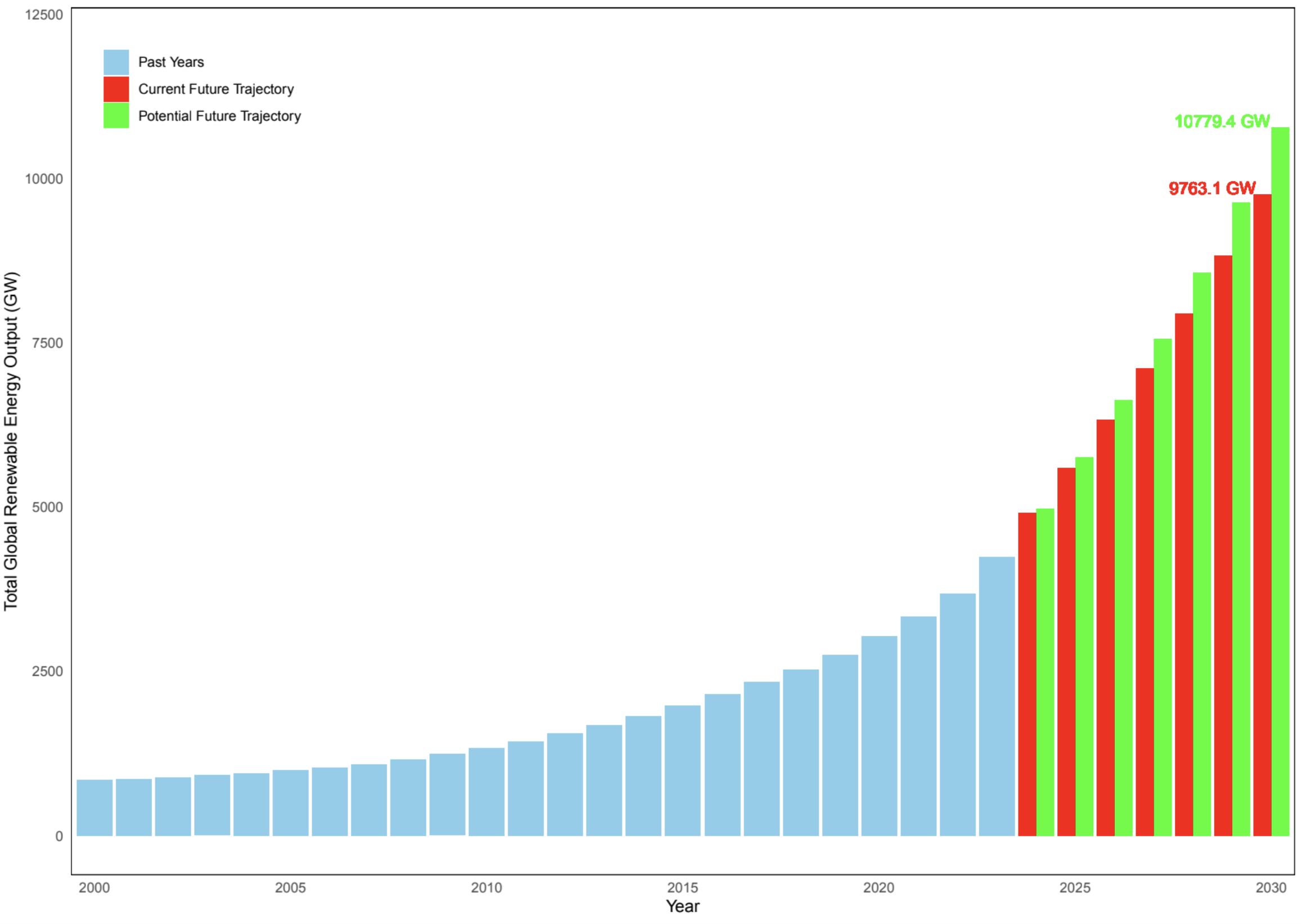
From the graph above, made using the IEA’s data, it is clear to see that if we continue on our current trajectory, we’ll reach 2030 with a considerably lower output than the target 11,000 GW. However, if the challenges that the IEA have outlined are addressed, then the projection is a lot more hopeful in potentially reaching the goal set out at COP28.

